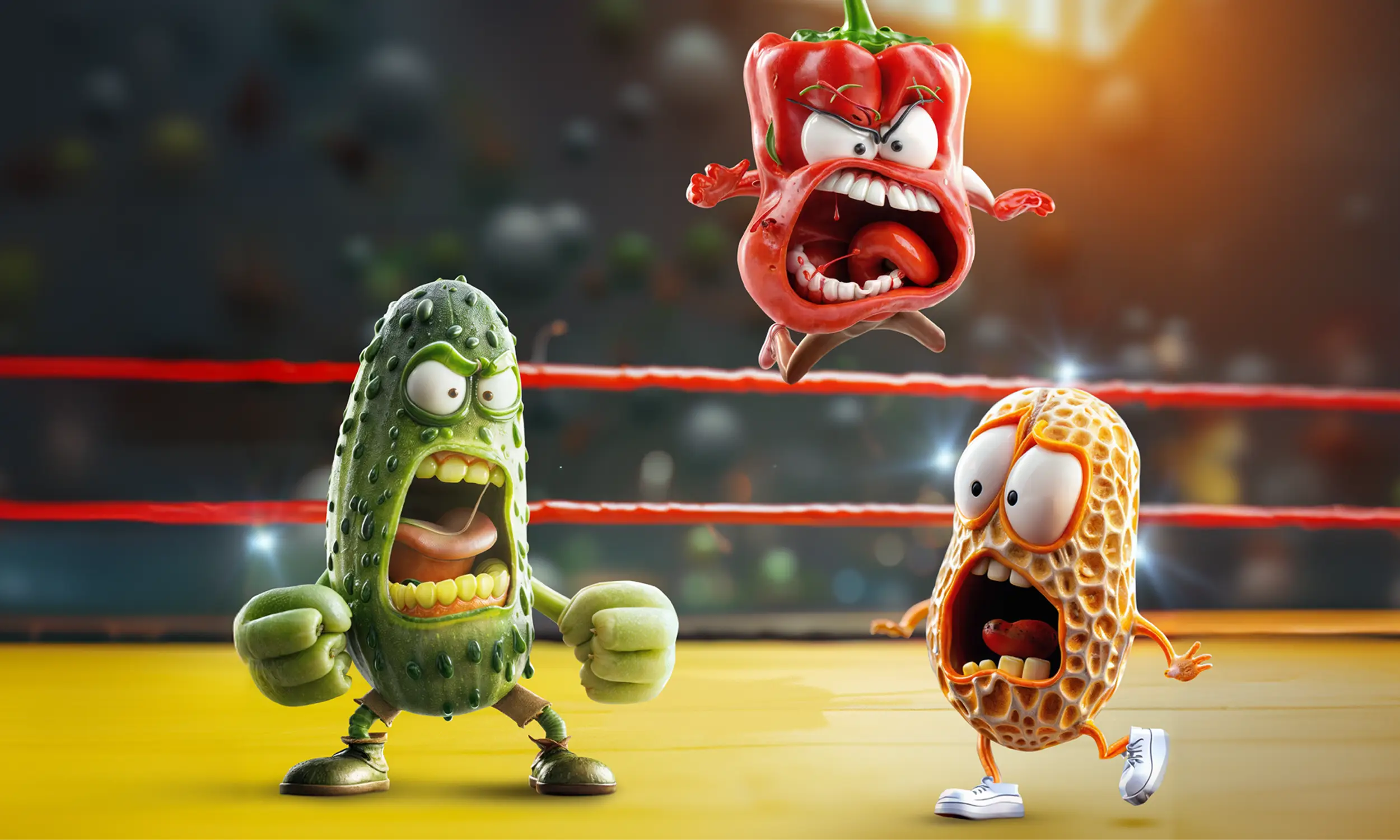
In today’s fast-paced and quickly growing consumer packaged goods (CPG) industry — which is expected to grow at over 4% CAGR globally over the coming decade or so — standing out in an increasingly saturated market is a constant challenge. With new brands continually entering the space and consumer expectations constantly evolving, competition is fiercer than ever.
As a result, employing strong CPG marketing strategies has become essential for brands aiming to capture and retain customer attention. From traditional marketing approaches to the ever-growing influence of digital marketing for CPG brands, staying ahead of the latest CPG marketing trends is crucial for success. In this dynamic and competitive landscape, an effective marketing strategy can not only drive brand awareness, but also foster customer loyalty.
Understanding the evolving CPG consumer
The CPG landscape has experienced a seismic shift in recent years, driven largely by changes in consumer behaviors and expectations. Modern CPG consumer trends reveal that shoppers are becoming more informed and selective than ever before. With at-their-fingertips access to endless information, many consumers now demand transparency, authenticity and ethical practices from the brands they support. This shift has given rise to conscious consumerism, a trend that sees environmental, social and ethical considerations driving more and more consumers’ purchasing decisions. Brands that fail to address these concerns risk alienating a significant portion of their audience.
At the same time, personalization has also emerged as a critical component of CPG marketing. Today’s consumers expect tailored experiences that meet their unique preferences and needs. As a result, personalized CPG marketing has become a necessity for brands looking to forge deeper connections with their customers. Leveraging data and insights to deliver targeted marketing campaigns enables CPG brands to provide relevant and engaging content that resonates with consumers on an individual level. And by understanding and adapting to these evolving consumer behaviors, brands can build stronger relationships with their audiences and maintain a competitive edge over their rivals.
Building a strong brand presence
In today’s saturated CPG marketplace, establishing a strong brand presence is more important than ever. At the core of effective CPG branding is developing a compelling brand story and identity that resonates with your target audience. Consumers are drawn to brands with clear missions, values and unique stories that reflect their own beliefs and aspirations. Crafting a narrative that goes beyond just your products and taps into the emotional aspects of your brand is essential for creating a deep connection with modern consumers.
Once you’ve established your brand story, ensuring consistent brand storytelling across all channels is key. Whether through packaging, advertisements or customer interactions, consistency builds trust and reinforces your brand identity. This unified message should also extend to digital platforms, where social media for CPG brands offers unparalleled opportunities for engagement and growth. Social media provides a direct line to consumers, making it an ideal platform for building your brand, sharing your story and fostering meaningful interactions.
Further, at the heart of all successful branding efforts is brand authenticity and transparency. Today’s consumers are savvy and quick to detect insincerity. They value brands that are honest about their practices, transparent about their products and authentic in their messaging. Prioritizing transparency and staying true to your brand values will not only attract loyal customers, but also enhance your brand’s credibility in the long term.
Mastering digital marketing for CPG
In the digital age, a well-rounded online presence is essential for any CPG brand looking to grow and thrive. One of the foundational elements of digital marketing for CPG brands is search engine optimization (SEO). By optimizing your website and content for search engines, you can increase visibility and drive organic traffic to your site. Effective CPG SEO involves targeting the right keywords, improving page load times, and ensuring a seamless user experience to boost your rankings and attract potential customers.
Another critical component of digital marketing is CPG content marketing. By creating valuable and informative content — such as blog posts, videos and how-to guides — you can engage consumers, build trust and position your brand as an industry leader. Content marketing helps educate your audience about your products while also addressing their pain points, ultimately nurturing stronger relationships with your customers.
To complement organic efforts, social media advertising for CPG is a powerful way to reach targeted audiences quickly. Paid ads on platforms like Facebook, Instagram and TikTok allow brands to showcase their products to highly specific demographics, increasing brand awareness and driving conversions. Similarly, search engine ads help CPG brands capture the attention of consumers actively searching for related products.
In addition to paid ads, email marketing for CPG remains one of the most effective ways to nurture leads and build lasting relationships with customers. Through personalized emails, brands can keep consumers informed about product launches, promotions and brand updates, all while also encouraging repeat purchases.
Finally, influencer marketing for CPG is an excellent strategy for a CPG brand to expand its reach and tap into new audiences. By partnering with influencers who align with your brand, you can leverage their credibility and influence to introduce your products to their followers, creating authentic connections and driving sales. Together, these digital marketing strategies form a comprehensive approach that helps CPG brands grow their presence, engage their audience and boost their long-term success.
Additional SEO optimization tips for blogs
To improve the visibility and search engine rankings of your CPG brand’s blog posts, be sure to apply these essential SEO techniques:
- Use relevant keywords ” Include target keywords naturally throughout your blog post, particularly in headings and subheadings to enhance content structure and improve SEO.
- Optimize meta descriptions and image alt tags — Write compelling, keyword-rich meta descriptions that summarize your content effectively and encourage clicks. Also, use descriptive image alt tags to boost accessibility and help search engines index your visuals.
- Include internal and external links — Add internal links to other relevant pages or blog posts on your website to improve navigation and increase user retention. Additionally, incorporate external links to authoritative sources, which can help you build credibility and offer added value to your readers.
- Promote your blog posts on social media ” Share your content on social media platforms like Facebook, LinkedIn and Twitter to drive traffic and engagement, signaling to search engines that your post is valuable and relevant.
- Regularly update and refresh your content ” Periodically review and update older blog posts with new information or adjustments to align with current trends, which can help you maintain SEO relevance and continue attracting organic traffic over time.
Embracing emerging technologies
As technology continues to evolve, CPG brands looking to be market leaders must stay ahead of the curve by integrating emerging tools into their marketing strategies. One of the most transformative recent advancements is artificial intelligence (AI), which enables brands to deliver highly personalized experiences and streamline operations through automation. By leveraging AI in CPG marketing, CPG brands can analyze consumer data to create targeted product recommendations, optimize pricing strategies and automate customer interactions, resulting in more efficient marketing efforts and improved customer satisfaction.
Another exciting development in the digital realm is the use of virtual reality and augmented reality (VR/AR) to create immersive experiences that engage consumers on a deeper level. VR/AR for CPG brands enables customers to immerse themselves in digital experiences such as visualizing products in real-world environments, participating in virtual product trials or enjoying interactive shopping experiences. These technologies offer an innovative way to enhance consumer engagement and boost brand awareness in a highly competitive marketplace.
As more consumers embrace voice-activated devices, optimizing for voice search is also becoming increasingly important. Voice search optimization involves tailoring content to better align with the natural language queries consumers use when interacting with smart speakers and virtual assistants. By optimizing for voice search, CPG brands can ensure that their products and services are easily discoverable on these platforms, tapping into a growing segment of consumers who prefer hands-free search capabilities.
Finally, blockchain technology is revolutionizing supply chain transparency for CPG brands. With blockchain in CPG, brands can provide consumers with clear, verifiable information about the origins and journey of their products. This transparency can help brands build trust with consumers who value ethical sourcing and sustainable practices, helping brands reinforce their commitment to authenticity and accountability.
Measuring and analyzing CPG marketing performance
To ensure long-term success in the competitive CPG landscape, it’s essential for CPG brands to continuously monitor and evaluate the effectiveness of their marketing efforts. By focusing on key performance indicators (KPIs), brands can gain insights into what’s working and identify areas for improvement. Common CPG KPIs include metrics like customer acquisition cost (CAC), customer lifetime value (CLV), brand awareness, engagement rates and conversion rates. Tracking these metrics enables brands to assess their marketing ROI and make informed decisions about where to allocate their resources.
Leveraging CPG marketing analytics tools and techniques is critical for gathering and interpreting data across various channels. Platforms like Google Analytics, social media dashboards and customer relationship management (CRM) systems provide valuable insights into consumer behavior, campaign performance and sales trends. These tools allow marketers to track real-time data, identify patterns and measure progress against established goals.
The true power of data lies in its ability to guide decision-making. By using insights gained from analytics, CPG brands can refine and optimize their marketing strategies. Whether it’s tweaking messaging, reallocating budgets or adjusting target audiences, the data-driven approach can help ensure that marketing efforts remain efficient and effective. Continuous analysis and optimization help brands stay agile and responsive in a rapidly evolving market, maximizing both short-term performance and long-term growth.
Case studies: Successful CPG marketing campaigns
Examining real-world examples of successful CPG campaigns for food and beauty brands can provide valuable insights into what works in today’s dynamic marketplace. Below are a few notable CPG marketing case studies that highlight the innovative strategies and tactics leading brands have employed to drive impressive results.
- One standout campaign is Dove’s “Real Beauty” initiative. Dove shifted away from traditional beauty marketing to embrace an empowering and authentic message celebrating natural beauty. This campaign resonated deeply with consumers, using a combination of social media engagement and brand storytelling to foster emotional connections. The results were remarkable — Dove not only boosted its sales but also strengthened its brand loyalty and enhanced its perception as a champion of body positivity. The key takeaway here is the power of aligning your brand with authentic values that resonate with your audience.
- Another effective campaign is seen in Coca-Cola’s “Share a Coke” initiative. Coca-Cola used consumer data to create personalized bottle labels featuring popular names and phrases. This campaign leveraged data-driven insights to offer a unique, individualized experience that encouraged consumers to share their personalized bottles on social media. The result was a significant increase in brand engagement and sales. The takeaway from this case is the effectiveness of using personalized content to connect with consumers on a personal level and drive meaningful interactions.
- Additionally, Oreo’s viral “Dunk in the Dark” social media post during the 2013 Super Bowl remains a gold standard in real-time marketing. With clever, timely content shared during a blackout, Oreo capitalized on the moment and garnered massive visibility and engagement. The success of this campaign underscores the value of agility in marketing — being ready to adapt quickly to current events can pay off with significant brand exposure.
These CPG marketing case studies illustrate that innovative strategies — whether through authentic storytelling, personalized content or real-time engagement — can yield exceptional results. The key takeaway for brands is the need to be bold, data-driven and agile in their marketing efforts to drive long-term success.
In the competitive world of CPG marketing, staying ahead requires a strategic approach and a willingness to adapt. By embracing effective CPG marketing strategies, including leveraging digital marketing, building a strong brand presence and harnessing emerging technologies, brands can position themselves for success in a dynamic market.
It’s crucial for brands to remain agile and responsive to changing trends. The marketing landscape is continually evolving, and what works today might not be as effective tomorrow. Keeping an eye on emerging trends and being prepared to pivot as needed will help brands stay relevant and competitive.
Equally important is the emphasis on data-driven decision-making. Utilizing CPG marketing analytics and continually refining strategies based on insights can significantly enhance marketing effectiveness and ROI. Making informed decisions based on solid data helps ensure that your marketing efforts are both efficient and impactful.
We encourage you to implement these strategies and embrace a proactive approach to CPG marketing. By integrating these practices into your marketing efforts, you can drive greater engagement, boost brand loyalty and achieve sustained growth.
Elevate your CPG marketing efforts with Brandon
Could your CPG brand use the help of a team of experienced marketing professionals to create more awareness of, interest in and demand for your products? At Brandon, our team of certified brand strategists and data-driven marketing professionals has worked with a broad range of CPG brands in an array of categories — and has consistently helped put their products in more consumers’ carts.
In addition, Brandon’s fully integrated marketing firm can cover the entire spectrum of your brand’s marketing needs, from SEO, social media and email marketing to e-commerce, digital marketing, media, creative, analytics, public relations, brand strategy, web design and more. To get started with help ranging from a simple website analysis to a comprehensive strategy tailored to boost the performance of all your marketing campaigns, contact us today.
By subscribing to our newsletter, you agree to our Privacy Policy.




